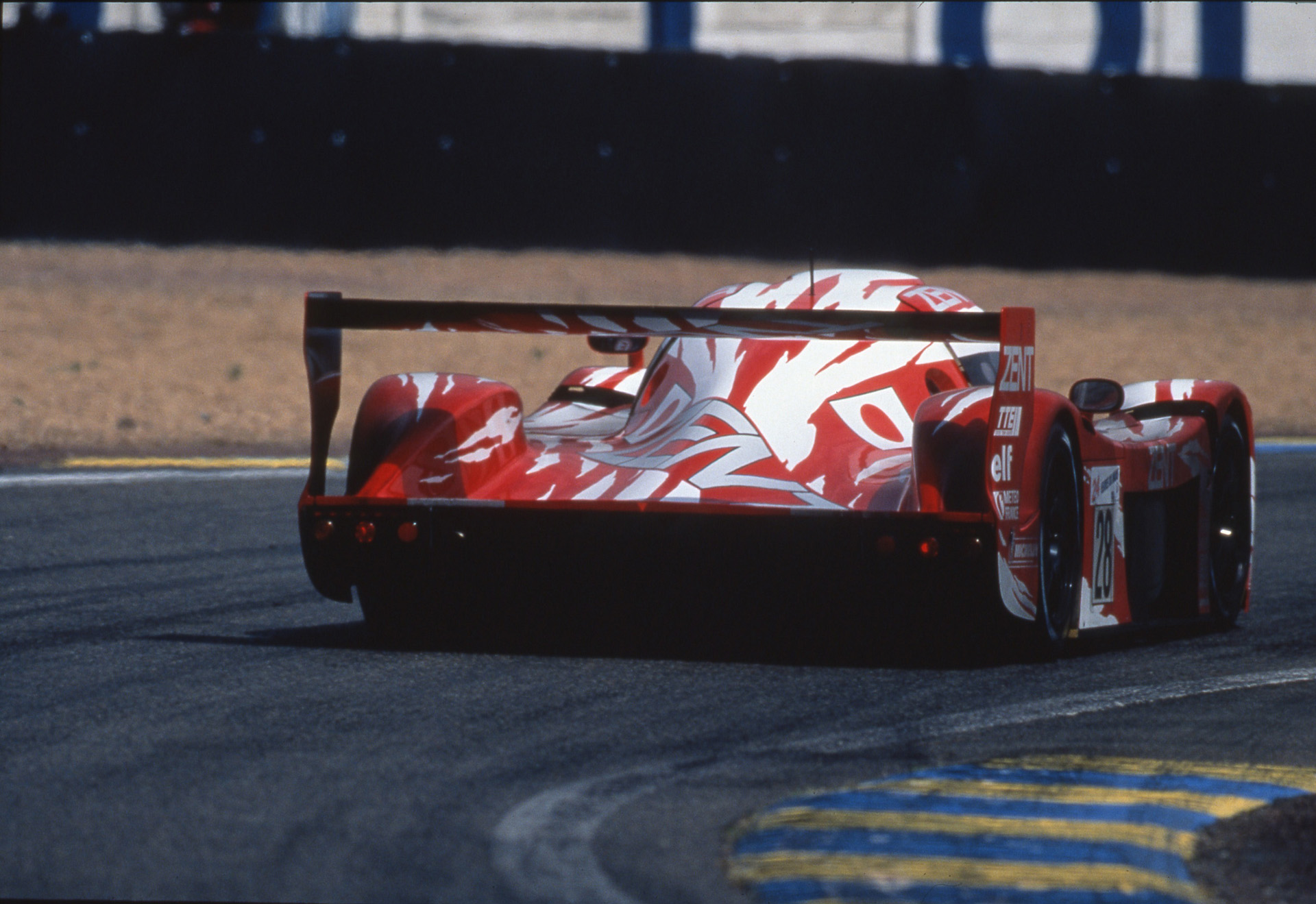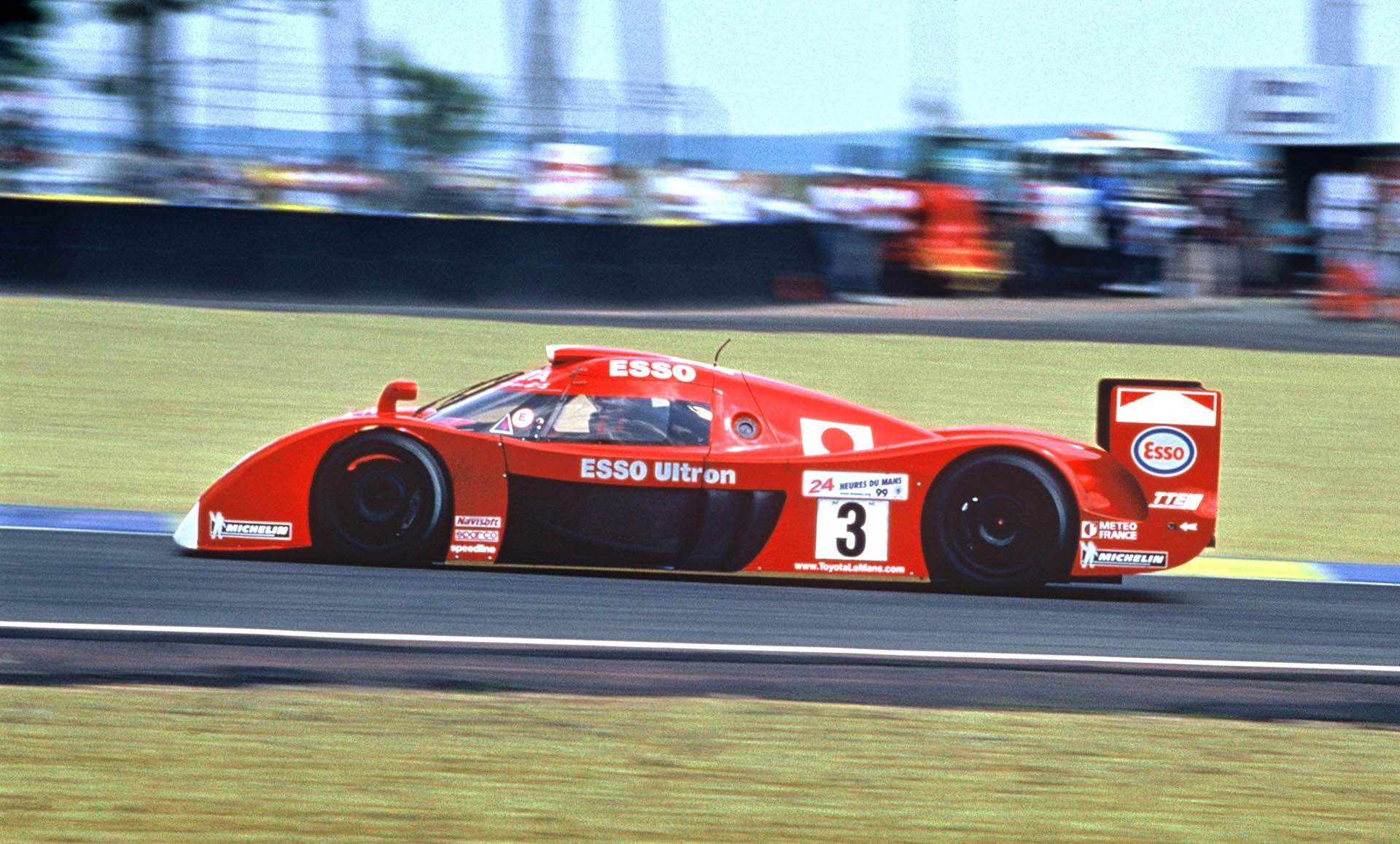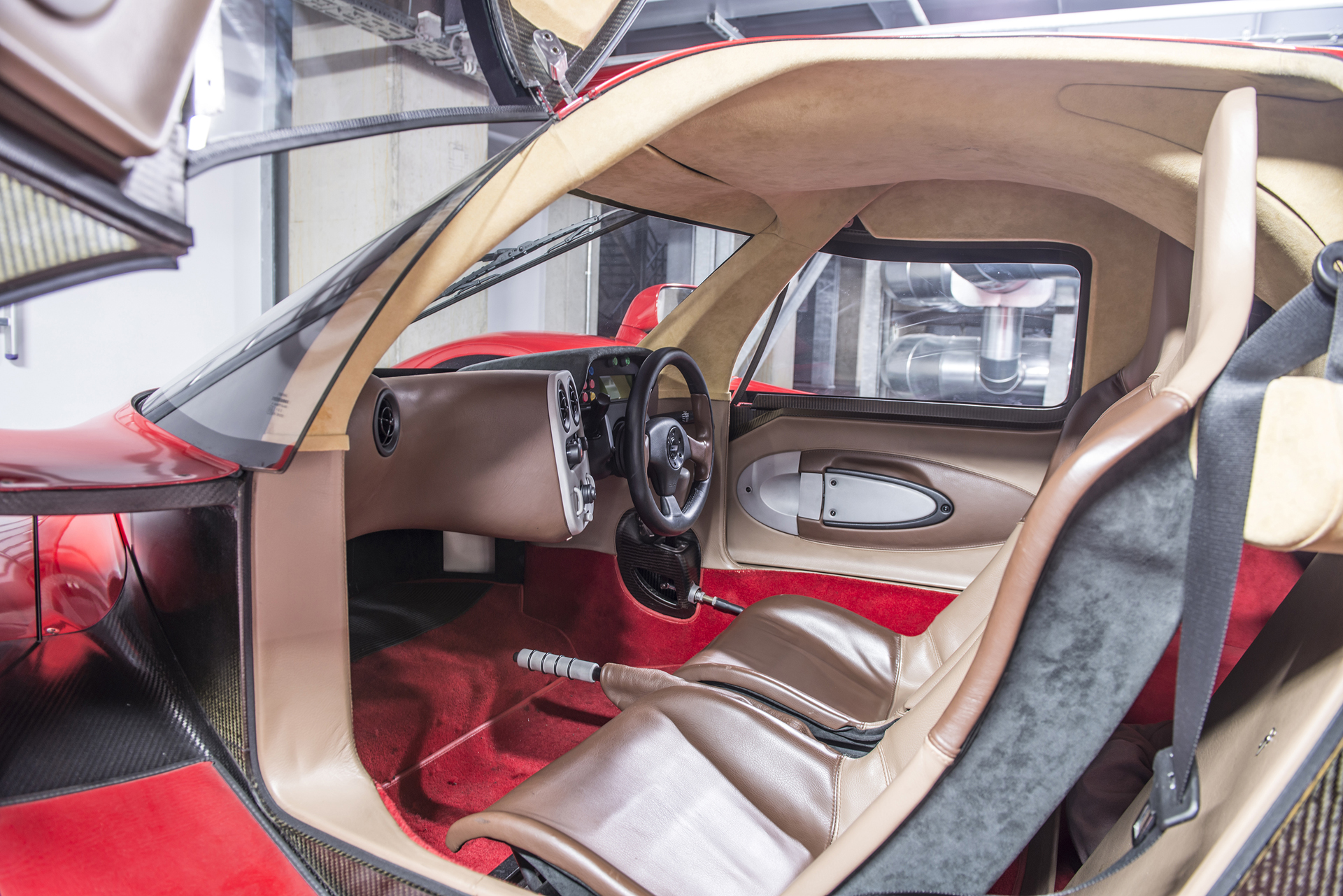Toyota certainly captured our attention when it revealed the GR Super Sport concept at the Tokyo Auto Salon earlier this year. But the new show car wasn’t the first time that the Japanese automaker toyed with the idea of a road-going Le Mans prototype.
Back in the late 1990s, Toyota competed at Le Mans with the GT-One. Known internally as the TS020, the prototype was initially classified in the GT1 category, but was subsequently adapted to the LMGTP class.
Purpose-built around a custom carbon and aluminum monocoque, the GT-One packed a 3.6-liter twin-turbo V8 with a six-speed sequential transmission and a pushrod suspension – the very cutting edge for racing cars at the time.
Unfortunately the seven examples of the race car enjoyed only limited success. The team fielded three cars at Le Mans in 1998 and again in 1999. But each time, only one (piloted by Japanese drivers) made it to the finish line – finishing ninth the first time, and second (first in class) on the second try.
The ever-changing regulations at the time also mandated that Toyota build a small number of road-going examples, and a small number it built indeed. Only two, to be specific. It was only minimally modified from the racing version, cranking out the same 600 horsepower and 479 lb-ft of torque. This at a time when the Ferrari 550 Maranello (that had been released just two years prior) offered “only” 478 hp and 419 lb-ft, and the Lamborghini Diablo (of the day) boasted 529 hp and 446 lb-ft – both from much larger V12 engines.
With only two road-going examples made, the GT-One was far more rare than the Mercedes-Benz CLK-GTR or Porsche 911 GT1 – though Nissan’s R390 remains even more scarce, with just one road-going version in existence.
Both examples are still in Toyota’s custody – one displayed at its headquarters in Japan, the other at its racing facility in Germany. So your chances of ever seeing one – much less driving it – are pretty scarce. Here’s hoping the new GR Super Sport sees more regular production.












